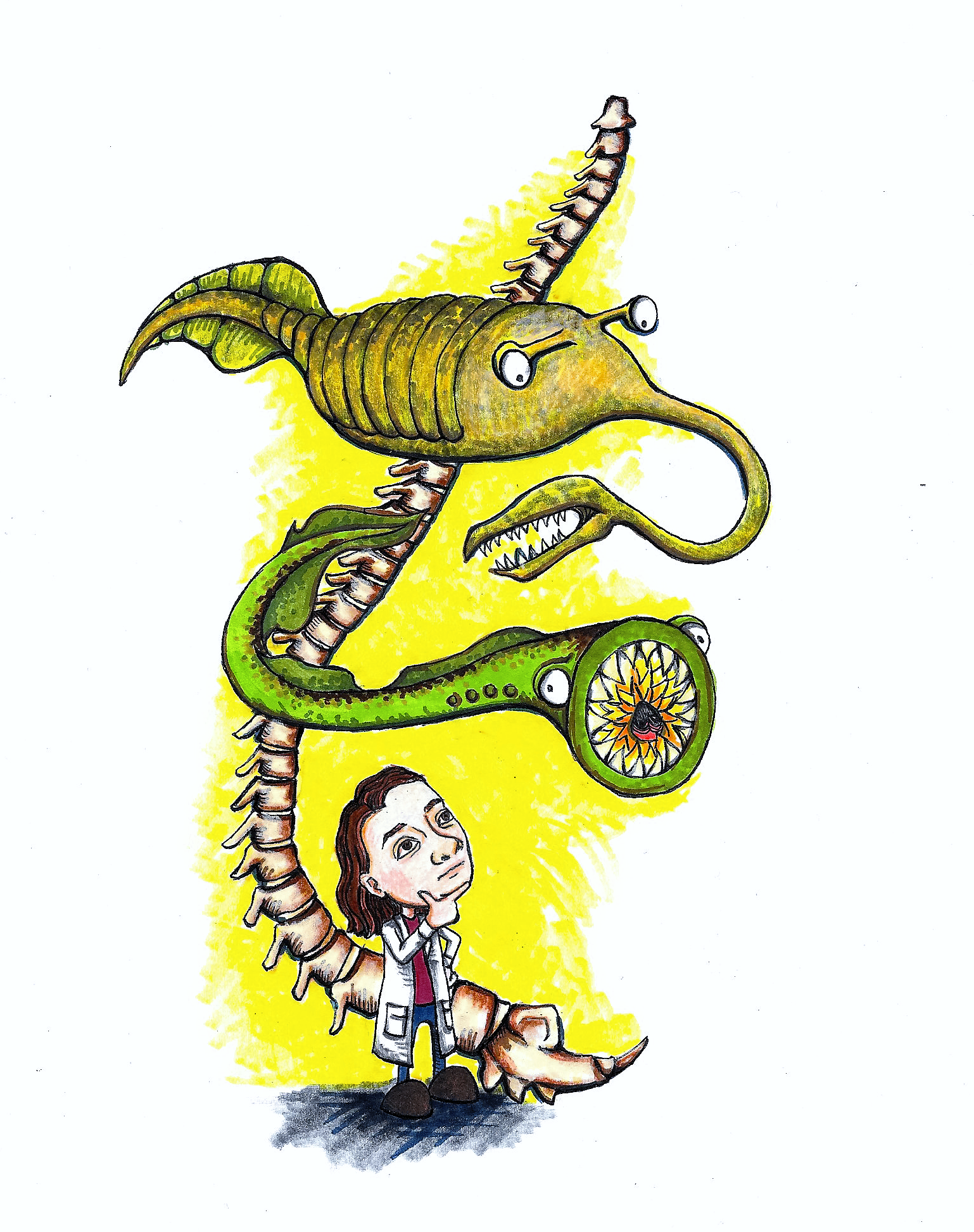
Sonia Ruiz
A new Yale study has shed light on the ancestors of the modern lamprey, a vertebrate belonging to the family of jawless fish with toothed, sucking mouths.
Researchers in Yale’s Department of Geology & Geophysics have recently identified the proper classification for the elusive “Tully Monster,” or Tullimonstrum gregarium, an ancient vertebrate native to the Midwestern United States. The team discovered that the creature was a vertebrate that belonged to the stem lamprey family. The researchers said that by classifying this organism as a vertebrate lamprey, they have redefined the boundaries of the entire lamprey family tree. The findings were published in the journal Nature last month.
“There are a lot of fossils in the fossil record that are unidentified — but they’re around 500 or 600 years old,” said senior study author Victoria McCoy GRD ’15, who is currently a postdoctoral fellow at the University of Leicester. “But with the Tully Monster, it was really strange to have something that young — 300 million years old — with this distinctive of a morphology that was still unidentified.”
Scientists had been struggling to classify the Tully Monster since the 1950s. Erin Saupe, study co-author and postdoctoral associate in Yale’s Department of Geology & Geophysics, emphasized that the Tully Monster has such a “strange combination of features” that it was originally suspected to be everything from a gastropod, to a worm, to a vertebrate.
McCoy also said the research was ambiguous, describing the potential implications of a shift in biological classifications.
“With the Tully Monster, we found we had two options: Was it a member of a new group or a strange representation of a current group?” McCoy said. “If it was a new group, then we’d have to add a new branch to the tree.”
After a thorough investigation, the research team found that the Tully Monster turned out to be a “strange representation” of the existing lamprey group.
“We found that [the Tully Monster] was a vertebrate and was related to the lampreys, which means that the lampreys were much more diversified than we originally believed,” McCoy said.
Sean McMahon, a co-author of the study and a postdoctoral associate in the G&G Department, said the most salient finding was that the mysterious creature was a vertebrate.
According to McMahon, the study was born out of a collaboration between researchers in G&G professor Derek Briggs’ research group, during which McCoy asked they revisit the Tully Monster fossils using modern technology. The group divided the project into several parts, and some members looked at the creature’s teeth while others examined the method of fossilization, McMahon said.
This classification process was carried out through a combination of modern techniques including elemental mapping — images showing spatial distributions of elements in a sample — examination of morphology — the relationship between form and structure of a living organism — and investigation of fossilization methods. While all parts of the fossil were examined, special attention was given to a particular light line running from the eyes to the end of the tail, McCoy said.
“This [line] was previously interpreted as the gut, but it didn’t seem consistent with other guts we had seen. Then, when I was reading up on lampreys and hagfish, I saw that those groups have a very similar feature — this was identified in the lampreys and hagfish as a notochord.”
A notochord is a skeletal rod supporting the body, and is found in all vertebrates. The identification of this structure completed the puzzle and allowed the researchers to come to conclusively classify the creature, McMahon said.
Using these new findings about the Tully Monster, McCoy was able to support a current hypothesis on the lamprey family. Modern lampreys are all very similar, but, based on the classification of the Tully Monster, the researchers hypothesized that today’s lampreys are just one small remnant group of what was once a large and diversified group, McCoy said.
“Tully Monster is the first discovered fossil in the lamprey division that is wildly different-looking from its present-day members — are there more?” McCoy said.
Saupe said the team hopes to investigate the methods of fossilization in the area where the Tully Monster was discovered: the Mazon Creek fossil sites of northern Illinois.
“There are still a lot of questions about the Mazon Creek assemblage. We still don’t know why these fossils formed where they did,” Saupe said. “And questions still remain from the Tully Monster research project … Is it a predator or a scavenger? How did it swim?” McCoy added.
In 1989, the Tully Monster was officially declared the state fossil of Illinois.







